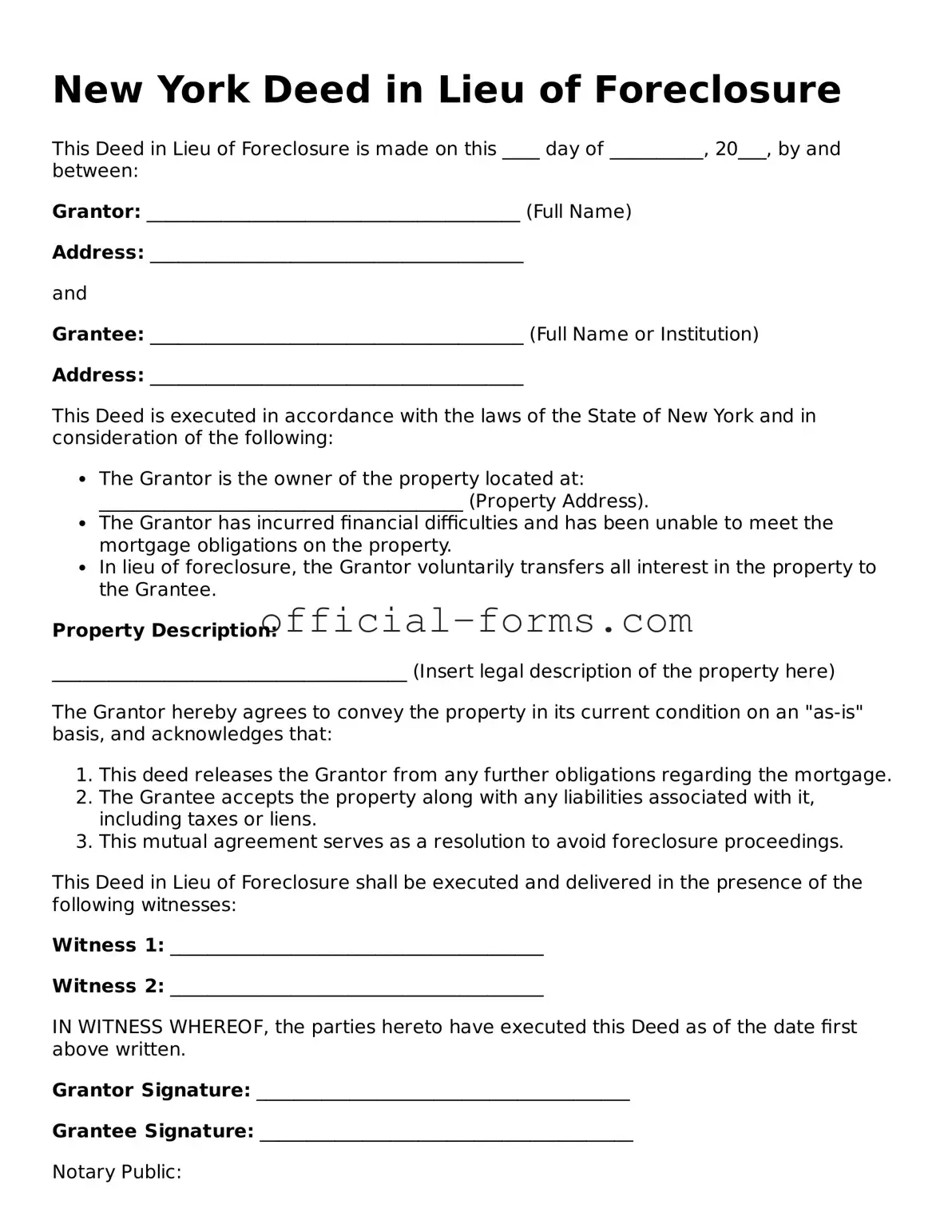Filling out the New York Deed in Lieu of Foreclosure form can be a complex process. Many individuals make common mistakes that can lead to delays or even rejection of their application. Understanding these pitfalls is crucial for a smooth submission.
One frequent mistake is failing to include all required parties in the deed. If multiple owners are involved, each must sign the document. Omitting a co-owner can invalidate the deed, leading to complications down the line.
Another common error is incorrect property description. The form must accurately describe the property being transferred. If the description is vague or incorrect, it can result in legal issues or disputes regarding ownership.
People often overlook the importance of notarization. A deed must be notarized to be legally binding. Without a proper notary seal, the document may not be accepted by the lender or the court.
Additionally, failing to provide a clear statement of consideration is a mistake many make. The form should state that the transfer is made in lieu of foreclosure. If this language is missing, it may lead to confusion about the intent of the deed.
Some individuals neglect to check for outstanding liens or claims against the property. If there are existing liens, the lender may refuse the deed. It is vital to ensure that the property is free of any encumbrances before proceeding.
Inaccurate or incomplete personal information is another issue. All parties must provide their full legal names and current addresses. Errors in this section can delay processing and create further complications.
Many people also fail to understand the implications of the deed. They may not realize that signing a deed in lieu of foreclosure can affect their credit score and future borrowing ability. It's important to consult with a financial advisor before making this decision.
Finally, submitting the form without accompanying documentation can lead to rejection. Required documents, such as proof of identity and any relevant financial statements, should accompany the deed. Ensuring all paperwork is complete and submitted together is essential for a successful process.
